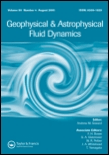
GEOPHYSICAL AND ASTROPHYSICAL FLUID DYNAMICS
Scope & Guideline
Transforming Perspectives on Fluid Dynamics in Nature and Space
Introduction
Aims and Scopes
- Geophysical Fluid Dynamics:
Research in this area includes the study of atmospheric and oceanic flows, including phenomena such as jet streams, ocean currents, and convective processes. - Astrophysical Fluid Dynamics:
This scope covers fluid dynamics in astrophysical settings, such as the behavior of stellar and planetary atmospheres, solar dynamics, and the interplay of magnetic fields with fluid motion. - Magnetohydrodynamics (MHD):
The journal emphasizes the study of MHD, focusing on the interaction between magnetic fields and conducting fluids, which is crucial in both astrophysical and geophysical phenomena. - Numerical and Analytical Modelling:
A significant focus on developing and applying numerical simulations and analytical models to solve complex fluid dynamics problems in both geophysical and astrophysical contexts. - Experimental Fluid Dynamics:
The journal also publishes studies that contribute to the understanding of fluid dynamics through experimental methods, particularly those that can be related back to theoretical predictions.
Trending and Emerging
- Climate and Environmental Dynamics:
Recent publications increasingly address the impacts of climate change on fluid dynamics, indicating a growing emphasis on environmental applications and the dynamics of climate systems. - Complex Flows and Turbulence:
There is a rising interest in studying complex flows, including turbulence in various contexts such as rotating systems and stratified atmospheres, which reflects the need for advanced understanding of these phenomena. - Interdisciplinary Approaches:
Emerging themes showcase a trend towards interdisciplinary research that combines fluid dynamics with other fields such as materials science, geophysics, and planetary science, highlighting the integration of diverse scientific perspectives. - Numerical and Computational Advancements:
The journal is increasingly focusing on innovative numerical methods and computational techniques, reflecting the rapid advancements in computational power and methods that allow for more sophisticated simulations. - Magnetoconvection and Dynamo Theory:
Growing interest in magnetoconvection and the dynamics of dynamo processes suggests an expanding focus on understanding magnetic field generation in both Earth and astrophysical contexts.
Declining or Waning
- Classical Fluid Dynamics:
While foundational studies in classical fluid dynamics have been a staple, recent years have seen fewer publications in this area as more complex and multidisciplinary approaches gain traction. - Static Models of Fluid Flow:
Research focusing on static or simplified models of fluid flow appears to be waning, as the community increasingly favors studies involving dynamic and time-dependent processes. - Purely Theoretical Approaches:
There is a noticeable decrease in purely theoretical papers without experimental or numerical validation, indicating a trend towards more applied research that bridges theory with practical observations.
Similar Journals
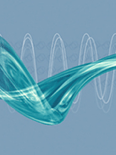
Annual Review of Fluid Mechanics
Elevating Understanding in Fluid DynamicsThe Annual Review of Fluid Mechanics, published by Annual Reviews, is a premier journal in the field of fluid mechanics, dedicated to advancing our understanding of fluid behavior through comprehensive and critical reviews of contemporary research. With an impressive impact factor that reflects its stature—ranking Q1 in Condensed Matter Physics and positioned 4th out of 434 in Scopus’s Physics and Astronomy category—it stands as a vital resource for researchers, professionals, and students alike. Since its inception in 1970, the journal has provided vital insights and synthesized knowledge that drive innovations and applications across various scientific disciplines. Although it does not offer open access, the journal ensures rigorous editorial standards and captivating content that contributes meaningfully to the academic discourse in fluid dynamics. Published annually, the Annual Review of Fluid Mechanics continues to be a cornerstone for anyone interested in the complexities of fluid movement and its implications in both theoretical and practical contexts.

Computational Thermal Sciences
Exploring the Nexus of Energy and MathematicsComputational Thermal Sciences, an esteemed journal published by BEGELL HOUSE INC, presents cutting-edge research at the intersection of computational mathematics, energy engineering, and fluid dynamics. With an ISSN of 1940-2503 and an E-ISSN of 1940-2554, this journal aims to disseminate high-quality research articles, reviews, and methodologies that improve our understanding of thermal processes and their applications. Renowned for its solid impact in the field, it holds a Q3 ranking in multiple categories including Computational Mathematics and Energy Engineering for 2023. As the field evolves, the journal continues to play a pivotal role in bridging theoretical research with practical innovations, thereby catering to a diverse audience of researchers, professionals, and students. Although it operates on a subscription model, the journal ensures accessibility to significant contributions in thermal sciences from 2009 to 2024, fostering an environment of knowledge sharing and collaboration.
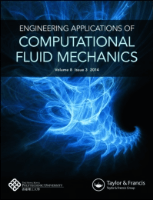
Engineering Applications of Computational Fluid Mechanics
Leading the Charge in Computational Fluid InnovationsEngineering Applications of Computational Fluid Mechanics is an esteemed journal published by Taylor & Francis Ltd that serves as a vital resource for researchers, professionals, and students in the field of fluid mechanics and its computational applications. With an ISSN of 1994-2060 and an E-ISSN of 1997-003X, this journal has established its reputation through its rigorous peer-review process and commitment to Open Access since 2015, facilitating widespread dissemination of cutting-edge research. Based in the United Kingdom, the journal is indexed in leading databases and has achieved a significant impact in its categories, ranking in the top quartile (Q1) for both Computer Science (miscellaneous) and Modeling and Simulation as of 2023. Notably, its Scopus rankings place it in the top 4% of Mathematics/modeling and simulation, highlighting its importance in advancing knowledge and innovation within the discipline. The journal invites contributions that explore both theoretical and practical aspects of computational fluid dynamics, fostering collaboration and intellectual growth within the community.
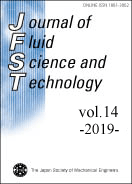
Journal of Fluid Science and Technology
Fostering Global Collaboration in Mechanical EngineeringThe Journal of Fluid Science and Technology, published by the Japan Society of Mechanical Engineers, serves as a pivotal platform for the dissemination of cutting-edge research in the fields of fluid mechanics and mechanical engineering. With an ISSN of 1880-5558, this Open Access journal has been dedicated to advancing the understanding of fluid flow and transfer processes since its establishment. As of 2023, it holds a significant position with a Q3 quartile ranking in both Fluid Flow and Transfer Processes and Mechanical Engineering categories. Researchers and practitioners are encouraged to explore the journal’s extensive collection of articles, contributing to the body of knowledge that impacts various practical applications in engineering and technology. The journal, which has established a reputation for quality amidst a competitive landscape, further fosters international collaboration and education by providing unrestricted access to its content. For professionals and students alike, the Journal of Fluid Science and Technology represents an invaluable resource for the latest findings and innovations in fluid dynamics and mechanical systems.

GEOPHYSICAL JOURNAL INTERNATIONAL
Connecting Researchers to the Heart of Earth's ScienceGEOPHYSICAL JOURNAL INTERNATIONAL, published by the esteemed Oxford University Press, stands as a premier platform for advancing research in the realms of Geophysics and Geochemistry. With a rich history spanning from 1922 to 2024, this journal not only adheres to the highest scholarly standards but has also achieved remarkable recognition, evidenced by its impressive ranking in the Scopus database—#32 in Geophysics and #48 in Geochemistry and Petrology, placing it within the top quartiles of its field. Researchers and professionals will appreciate its comprehensive scope and commitment to disseminating vital research findings, which significantly contribute to our understanding of the Earth's processes. Although it does not offer open access, the journal's Q1 quartile status underscores its influence and importance in shaping contemporary scientific discourse. Whether you are a seasoned researcher or a budding student, GEOPHYSICAL JOURNAL INTERNATIONAL is an indispensable resource for essential knowledge and groundbreaking studies in the geophysical sciences.

Magnetohydrodynamics
Navigating the Frontiers of Theoretical and Applied PhysicsMagnetohydrodynamics, published by the University of Latvia Institute of Physics, stands as a crucial repository of knowledge within the realms of Electrical and Electronic Engineering and Physics and Astronomy. With its roots extending back to 1970, this journal offers an extensive archive of scholarly articles focusing on the dynamics of electrically conducting fluids, an area of increasing relevance in both theoretical and applied physics. Although the journal currently does not operate under an open-access model, it provides valuable insights that continue to impact ongoing research and technological advancements in magnetohydrodynamic applications. Its prestigious standing is reflected in its Q3 category rankings within both specified fields and its significant position within the Scopus rankings, marking its importance for professionals and researchers alike. As the journal reaches the convergence years culminating in 2024, readers can expect a rich anthology of pioneering studies and developments that bridge the gap between fundamental research and its practical implications.
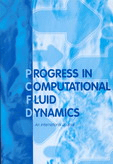
PROGRESS IN COMPUTATIONAL FLUID DYNAMICS
Bridging Theory and Application in Computational Fluid DynamicsPROGRESS IN COMPUTATIONAL FLUID DYNAMICS, published by InderScience Enterprises Ltd, is a vital journal in the realms of Computer Science Applications and Condensed Matter Physics. Established in 2001, this journal serves as a platform for disseminating innovative research findings and technological advancements in computational fluid dynamics, targeting both theoretical and applied aspects. With a current impact factor positioning it in the Q4 quartile for its fields, it captures a wide array of topics including numerical methods, simulation techniques, and real-world fluid dynamics applications, fostering dialogue among researchers, practitioners, and educators alike. Although it does not provide Open Access options, it remains an important resource for those investigating fluid dynamics phenomena. As it continues to evolve through 2024, PROGRESS IN COMPUTATIONAL FLUID DYNAMICS is positioned to contribute significantly to the scientific community, addressing core challenges while promoting collaboration and knowledge exchange.
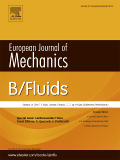
EUROPEAN JOURNAL OF MECHANICS B-FLUIDS
Unveiling the Mysteries of Fluid BehaviorThe EUROPEAN JOURNAL OF MECHANICS B-FLUIDS, published by Elsevier, is a prominent journal in the field of fluid mechanics, addressing the theoretical and experimental aspects of fluid behavior. Since its inception in 1990, this journal has consistently fostered a robust academic dialogue, maintaining a significant impact evidenced by its Q2 ranking in both Mathematical Physics and Physics and Astronomy categories as of 2023, placing it among the top publications in these disciplines. Researchers and professionals focusing on fluid dynamics will find a wealth of knowledge in its articles, which span broad topics pertinent to real-world applications as well as fundamental theories. While the journal is not open access, it offers critical insights that shape ongoing studies in fluid mechanics, making it an invaluable resource for anyone looking to deepen their understanding of the field. Located in the innovative environment of Amsterdam, Netherlands, the journal serves as a nexus for cutting-edge research and collaboration globally.

Fluids
Connecting scholars and practitioners in condensed matter physics.Fluids is a leading open-access journal published by MDPI that commenced its publication in 2016, fostering a vibrant platform for the dissemination of high-quality research in the fields of Condensed Matter Physics, Fluid Flow and Transfer Processes, and Mechanical Engineering. Based in Switzerland, the journal has earned a prominent reputation, achieving a Q2 categorization in the latest 2023 rankings, indicating its significant impact within respective subject areas. Researchers and professionals will find Fluids an invaluable resource, as it not only facilitates the sharing of innovative studies but also provides open access to research findings, ensuring widespread visibility and utility. With a diversified editorial board and a commitment to exploration in fluid dynamics and related applications, Fluids aims to advance knowledge, foster collaboration, and inspire future research endeavors among its readership. As the journal converges into new frontiers from 2016 to 2024, it continues to be a pivotal reference for scholars and practitioners alike.

MECCANICA
Innovating Solutions for Tomorrow’s Engineering ChallengesMECCANICA, an esteemed journal published by Springer, stands at the forefront of research in the fields of Condensed Matter Physics, Mechanical Engineering, and Mechanics of Materials. Established in 1966 and continuing through 2024, this journal provides a robust platform for the dissemination of innovative research and advancements in these increasingly interconnected domains. With an impressive 2023 ranking placing it in the Q2 category across multiple fields, MECCANICA boasts a Scopus rank of #198 in Mechanical Engineering, #150 in Condensed Matter Physics, and #141 in Mechanics of Materials, highlighting its significance and influence within the scholarly community. The journal aims to foster dialogue among researchers, professionals, and students, facilitating the exchange of cutting-edge ideas and methodologies crucial for overcoming contemporary engineering and physics challenges. Readers can access a wealth of knowledge through its comprehensive articles, and while it does not currently offer open access, the journal remains instrumental in shaping the future of engineering and physical sciences.